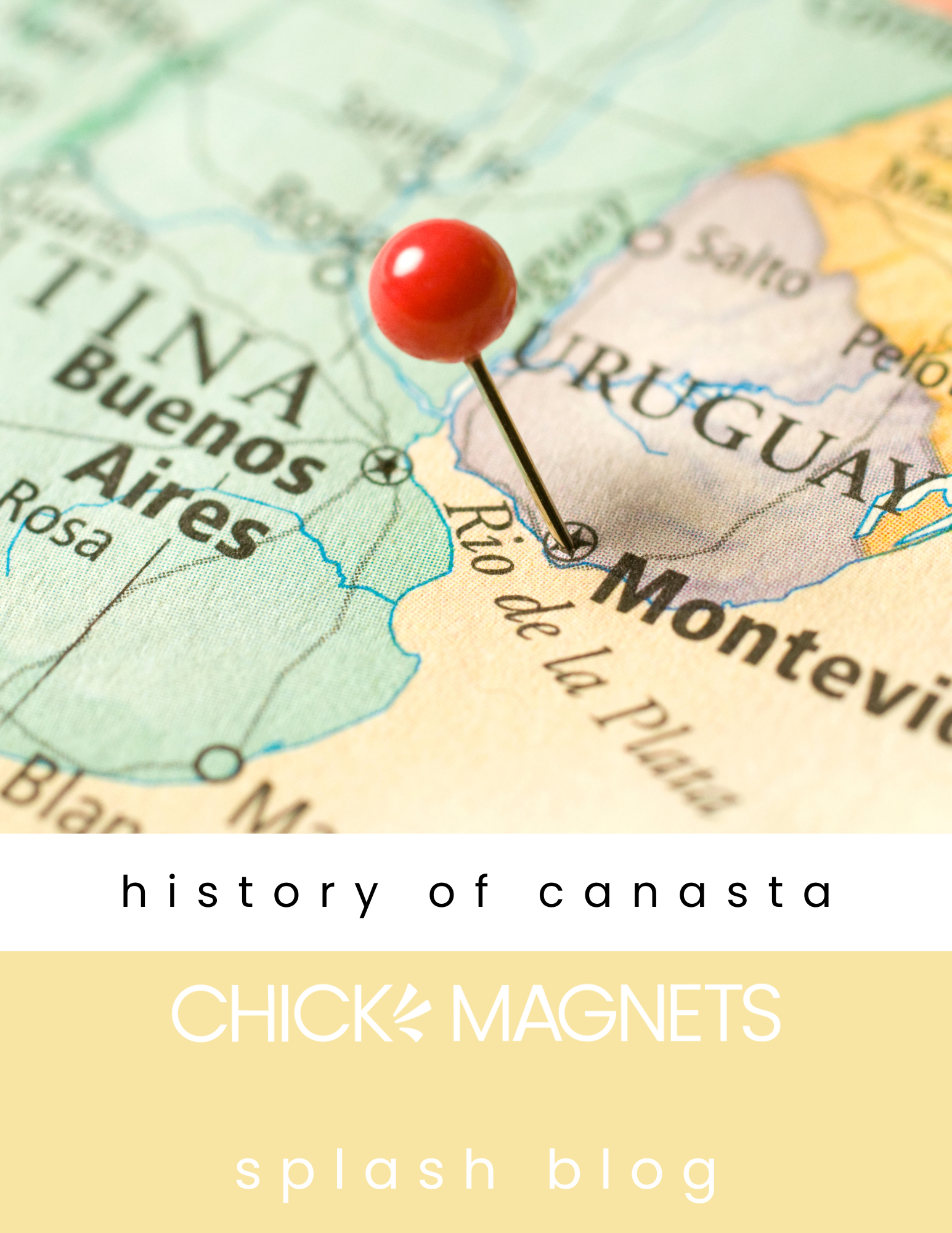Canasta, a popular member of the rummy family, was born in 1939 at the prestigious Jockey Club of Montevideo, Uruguay. Created by two friends and longtime bridge partners, attorney Segundo Santos and architect Alberto Serrato, Canasta was designed to combine the best elements of bridge and rummy, with a fresh twist. The Spanish word “canasta” meaning “basket,” inspired the name, reflecting the goal of grouping cards into melds, like filling a basket.
From Uruguay to the World: Canasta’s Glamorous Debut
Canasta quickly captivated players in Uruguay, spreading like wildfire into the hearts of Argentine card lovers in Buenos Aires during the 1940s. The game’s blend of strategy and luck was irresistible, and by 1948, American travelers brought it back to the U.S. It became a sensation almost overnight. By January 1950, a leading publication declared: “The principal card development of 1949 was probably the sudden popularity of Canasta, which spread more rapidly than any game except Mah-Jongg in the early Thirties.” By the end of that year, over ten million Americans were hooked. Glamorous Canasta parties became all the rage on Manhattan’s swanky Upper East Side and the game graced the pages of newspapers and magazines, securing its place in American culture.
The Golden Age of Canasta: Standardizing the Craze
By 1950, Canasta was more than a trend – it was a national pastime. The American Contract Bridge League (ACBL) stepped in to standardize the rules, and soon everyone from Hollywood stars to suburbanites was caught up in the Canasta craze. The game’s charm wasn’t just its clever combination of skill and luck – it was the social connections it fostered. Women across America hosted Canasta parties, where cards were played, gossip flowed, and friendships flourished.
The game wasn’t without its share of drama. As its popularity soared, it even sparked the occasional amusing controversy. In a whimsical twist, The New York Times reported on March 26, 1956: “Husband, Tired of Beans, Gets Canasta Game Raided." It seems that the social pull of Canasta had some husbands feeling a little neglected! Though the charges were quickly dropped, this lighthearted episode perfectly captured the game’s hold on the culture – and on many homes.
Canasta’s Glamorous Evolution: From Samba to Revival
The 1950s and 1960s saw the emergence of Canasta variations, such as Samba and Bolivia, each adding a unique twist. Though the craze quieted by the 1960s, Canasta never truly went away. By the 1980s and 1990s, it was being enjoyed again by card lovers everywhere.
The Mah-Jongg Connection: Special Hands
This time, as Canasta evolved, it began to resemble another beloved game known for its rich strategy and devoted following - Mah Jongg! While there’s no concrete evidence of a direct cultural crossover, the parallels between Mah Jongg hands and Canasta’s Special Hands are hard to ignore. Both feature sets of 14 tiles or cards in a particular sequence that can instantly end a round, adding an element of surprise and high stakes. Special Hands gave Canasta a fresh, strategic twist, further solidifying the game’s place as a timeless classic in the world of card games.
Canasta Today: A Timeless Classic with a Playful Twist
Fast forward to today, and Canasta is still the life of the party. Whether you’re playing with friends at a chic summer soirée, lounging poolside, or gathering with friends on vacation, Canasta continues to charm players with its mix of strategy, luck, and social interaction. And thanks to Chick Magnets, you don’t have to worry about wind scattering your cards or sacrificing style for functionality.
Our portable, wind-resistant canasta traveler is designed for card lovers who want to take the game anywhere – from the beach to the club, poolside or even on vacation. With lightweight, stylish pieces that are as easy to pack as they are to play, you can enjoy Canasta outdoors without losing a card - and always in style.
So, the next time you shuffle a deck and gather your friends for a game of Canasta, remember—you’re not just playing a card game. You’re carrying on a tradition that has brought people together for decades. Game on!


